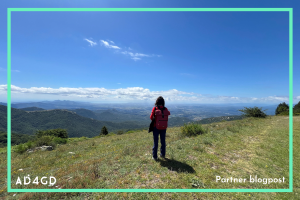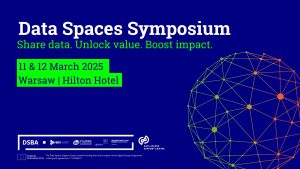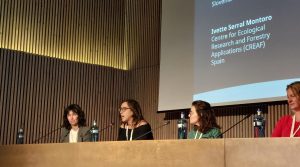
AD4GD partners during a meeting in Birmingham. Image: Joan Masó.
From October 24th to 27th, several members of the AD4GD project met in the city of Birmingham to attend an internal workshop organized by Aston University, one of our partners and leaders in the coordination of our pilot cases. The aim of the meeting was to continue with the intense work already carried out in a previous meeting in Bonn, but focusing further on the technical aspects of our proposal for the Green Deal Data Space such as the access of users to datasets, the challenges of integrating data from heterogeneous sources, the use of the Sensor Things API and standard, and the semantic enrichment of these systems.
It is known that, during the 18th century, the parishes of Birmingham and Aston “were teeming with metalworkers and noisy with the sound of hammers”. Iron stimulated innovation (steam engines, iron bridges,…) and its derived products supported 34% of trades, which turned the region into an important center of production during the Industrial Revolution. In 2019, the digital economy made up 26,3% of the UK’s GVA meaning that data has become the new precious commodity. We could not find a better location to inspire our work and foster innovation on data sharing.
The workshop followed a tight agenda in which specialized working groups were organized for each of the topics to be addressed, which were then discussed among the entire group. This dynamic had an impact on the internal organization of the project, which has been reoriented to maintain the teams formed during the workshop.
Connectors, a solution under discussion
One of the important technical considerations when designing a dataspace is establishing how the data is accessed. During the workshop, we discussed the suitability of using standardized connectors and the different possibilities of asset definition that would be appropriate for our goals.
According to the standard defined by the International Data Spaces Association (IDSA), a dataspace allows the trustworthy exchange of data between a certified data provider and a recipient, based on mutually agreed rules. As participants in a dataspace may present different levels of trust, it is essential to define the set of “rules” governing this exchange. A connector is a software component that can provide technical help to define the protocols required for entities to publish data, negotiate usage agreements, and access data as part of a dataspace. This way of sharing data among trusted participants contracts with the more open approach that was traditionally used in the Internet by Spatial Data Infrastructures such as INSPIRE. Both approaches should be reconciled.
In this regard, when using connectors, a set of assets must be defined; commonly these are static files. In the world of big geospatial data, the access is given using standard interfaces and APIs that require query parameters and dynamic responses. A provider should be able to pre-define parameters, so that the consumer will be able to provide values and get the expected response in the form of a subset of the original dataset .
Biodiversity in the spotlight
Another discussion that took place revolved around the biodiversity pilot case, co-led by CREAF researchers and Aston University. This pilot is exploring how to improve the measurement and applicability of functional landscape connectivity for local and regional decision making.
During the workshop, one of the groups worked on improving the connectivity calculation using Miramon tools, on the pre-processing of the data and on the classification of land cover maps.

Visit to the Design Factory at Aston University. Image: Joan Masó.
Semantic Interoperability, an ambitious goal
Another of the workshop groups worked on semantic enrichment of the developed systems, which is another of the main project objectives. Various data transformation techniques were proposed and tested, and standard vocabularies (for example some on air pollutants, in line with our pilot case on air quality) were proposed to characterize the meaning of the data in the Green Deal Data Space. These vocabularies are linked from catalogs such as GeoNetwork and from the Sensor Things API.
The data collected by sensors connected through the Internet of Things has great potential for decision-making at a local and global level, as Cèdric Crettaz (IoT Lab) explained in this blogpost. Being aware of this, some tests were carried out with the FROST implementation of the Sensor Things API plus, the PSNC Green DEal Information Model and TAPIS, a STA+ query builder developed by Grumets at CREAF.
The reward for several days of hard work was a visit to the Design Factory at Aston University, where researchers demonstrated 3D printers and examples of experimental prototyping using biochar and other innovative materials to the AD4GD team. Here are some pictures from the visit.





